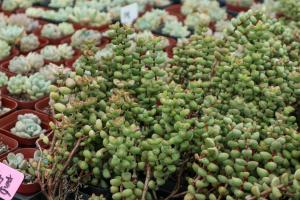Can Fuscia Plants Grow in Pots?
Fuchsia plants are known for their graceful, drooping stems and vibrant, bell-shaped flowers. They are often used to add color to gardens, balconies, and patios. But what if you don’t have a garden or a balcony? Can you still grow fuchsia plants in pots? The answer is yes, fuchsia plants can thrive in pots if you follow a few basic guidelines.
Choosing the Right Container
When it comes to choosing a container for your fuchsia plant, size matters. The container needs to be big enough to accommodate the plant’s root system and allow for proper drainage. It’s also important to use a container with drainage holes to ensure the soil doesn’t become waterlogged. Fuchsia plants prefer a slightly acidic soil, so use a potting mix that contains peat moss or add some acidic fertilizer to the soil.
Light and Temperature Requirements
Fuchsia plants typically require bright but indirect light. If you’re growing them indoors, choose a spot near a window that gets plenty of sun but avoid placing them in direct sunlight. In hotter climates, fuchsia plants may benefit from afternoon shade. It’s also important to keep fuchsia plants in a relatively cool environment, between 60-70 degrees Fahrenheit, to encourage growth and prevent the flowers from wilting.
Watering and Fertilizing
Overwatering can quickly kill a fuchsia plant. They prefer soil that is moist but not waterlogged. Allow the soil to dry out slightly before watering again. It’s also important to fertilize fuchsia plants regularly, especially during the growing season. Use a low-nitrogen fertilizer that is high in potassium, phosphorous, and trace elements to encourage healthy growth and vibrant flowers.
Pruning and Maintenance
To encourage bushy growth and abundant flowers, it’s important to prune fuchsia plants regularly. Pinch off the tips of the stems to encourage branching and remove any dead or damaged leaves or flowers. If you’re growing fuchsia plants in pots, be sure to keep an eye on the root system. If the plant becomes root-bound, it may need to be repotted into a larger container.
Conclusion
In conclusion, fuchsia plants can grow successfully in pots as long as you use the right container, provide the proper light and temperature requirements, water and fertilize appropriately, and prune and maintain the plant regularly. With a little TLC, your potted fuchsia plants will bloom beautifully all season long.

 how many times do yo...
how many times do yo... how many planted tre...
how many planted tre... how many pine trees ...
how many pine trees ... how many pecan trees...
how many pecan trees... how many plants comp...
how many plants comp... how many plants can ...
how many plants can ... how many plants and ...
how many plants and ... how many pepper plan...
how many pepper plan...































